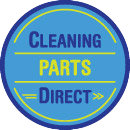Your Cart is Empty
Menu
-
- Home
- Equipment
- Contact
- Tennant Parts
- Tennant CS5 Parts
- Tennant 5100 Parts
- Tennant 5280 Parts
- Tennant 5300 Parts
- Tennant 5400 Parts
- Tennant 5680 Parts
- Tennant 5700 Parts
- Tennant 7100 Parts
- Tennant 7200 Parts
- Tennant 7300 Parts
- Tennant 7400 Parts
- Tennant T1 Battery Parts
- Tennant T1 Corded Electric Parts
- Tennant T2 Parts
- Tennant T3 Parts
- Tennant T5 / T5E Parts
- Tennant T7 Parts
- Tennant T7AMR Parts
- Tennant T12
- Tennant T15 Parts
- Tennant T16 Parts
- Tennant T17 Parts
- Tennant T20 Parts
- Tennant T290 Parts
- Tennant T300 / T300E Parts
- Tennant T390 Parts
- Tennant T500/T500e Parts
- Tennant T600 / T600E Parts
- Tennant i-mop Lite Parts
- Tennant I-Mop XL Parts
- Tennant I-Mop XXL Parts
- Tennant 636 Green Machines Parts
- Tennant 800/810 Parts
- Tennant 830 II Sweeper Parts
- Tennant 3610 Parts
- Tennant 3640 Parts
- Tennant 4300 ATLV Parts
- Tennant 6100 Parts
- Tennant 6200 Parts
- Tennant 6400 Parts
- Tennant 6500 Parts
- Tennant 6550 Parts
- Tennant 6600 Parts
- Tennant 6650 Parts
- Tennant S3 Parts
- Tennant S5 Parts
- Tennant S6 Parts
- Tennant S7 Parts
- Tennant S8 Parts
- Tennant S9 Sweeper Parts
- Tennant S10 Parts
- Tennant S20 Parts
- Tennant S30 Parts
- Tennant Sentinel Parts
- Tennant 92 Parts
- Tennant 95 Parts
- Tennant 97 Parts
- Tennant 110 Parts
- Tennant 240 Parts
- Tennant 250 Parts
- Tennant 255 Parts
- Tennant 255 II Parts
- Tennant 265 Parts
- Tennant 275 Parts
- Tennant 275 II Parts
- Tennant 280 Parts
- Tennant 8200 Parts
- Tennant 8300 Parts
- Tennant 8410 Parts
- Tennant M17 Parts
- Tennant M20 Parts
- Tennant M30 Parts
- Tennant 255 Parts
- Tennant 255 II Parts
- Tennant 275 Parts
- Tennant 275 II Parts
- Tennant 285 Parts
- Tennant 1120 parts
- Tennant 1610 Parts
- Tennant 2510 Burnisher Parts
- Tennant B5 & B7 Burnisher Parts
- Tennant / Nobles BR-1600-NDC parts
- Tennant E5 Carpet Extractor Parts
- Tennant Q12 Parts
- Tennant R3 Parts
- Tennant R14 Carpet Extractor Parts
- Tennant 3500 3520 3530 3540 3560 & 3580 Replacement Parts
- FM-17-SS / FM-20-SS / FM-20-DS Parts
- Tennant / Nobles V-WD-15 parts
- Tennant 1200 Parts
-
- Tennant Parts
- 866-766-5553
- Login
- USD

0
Your Cart is Empty